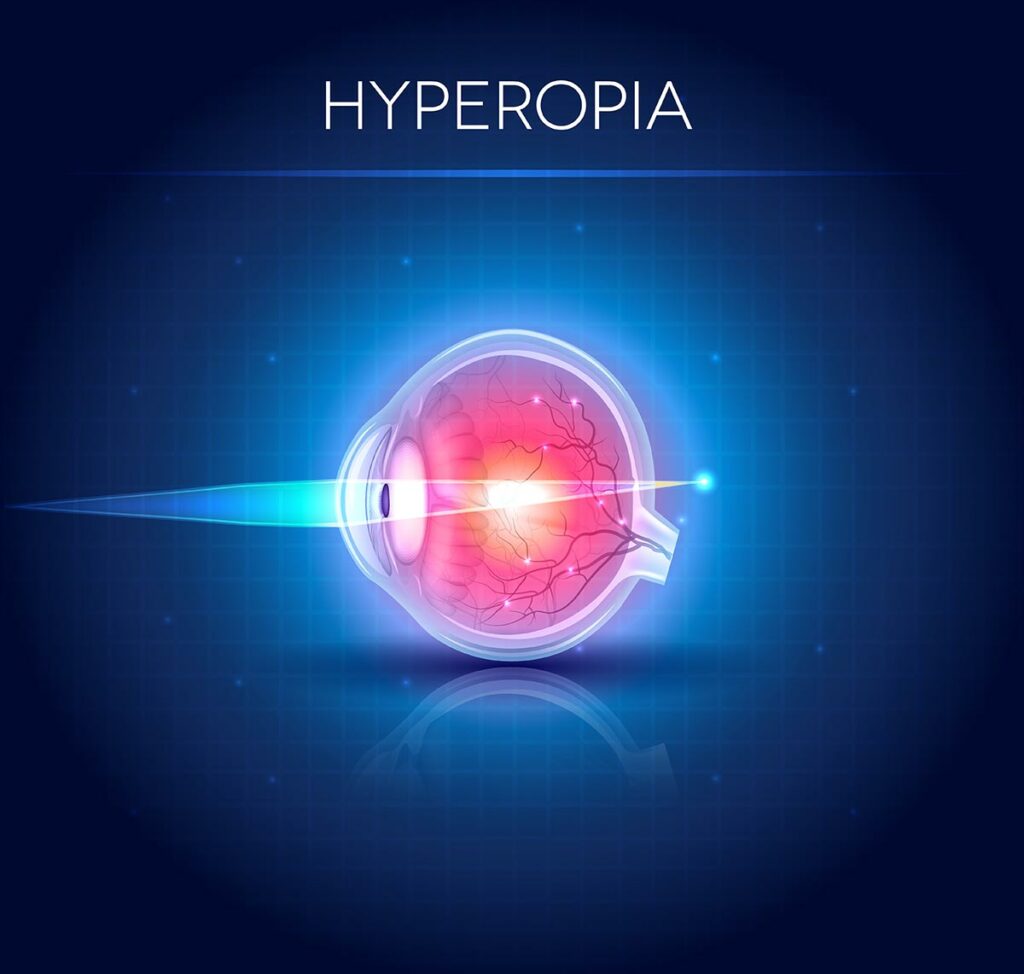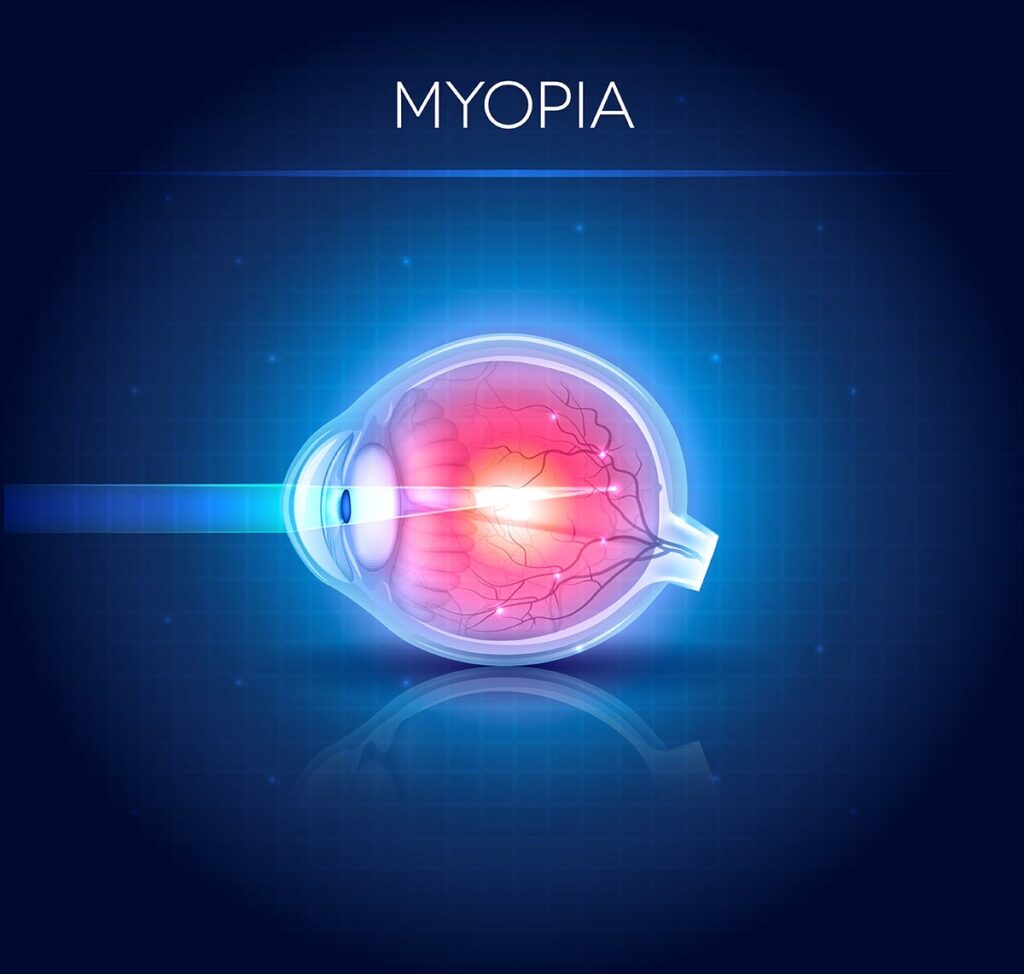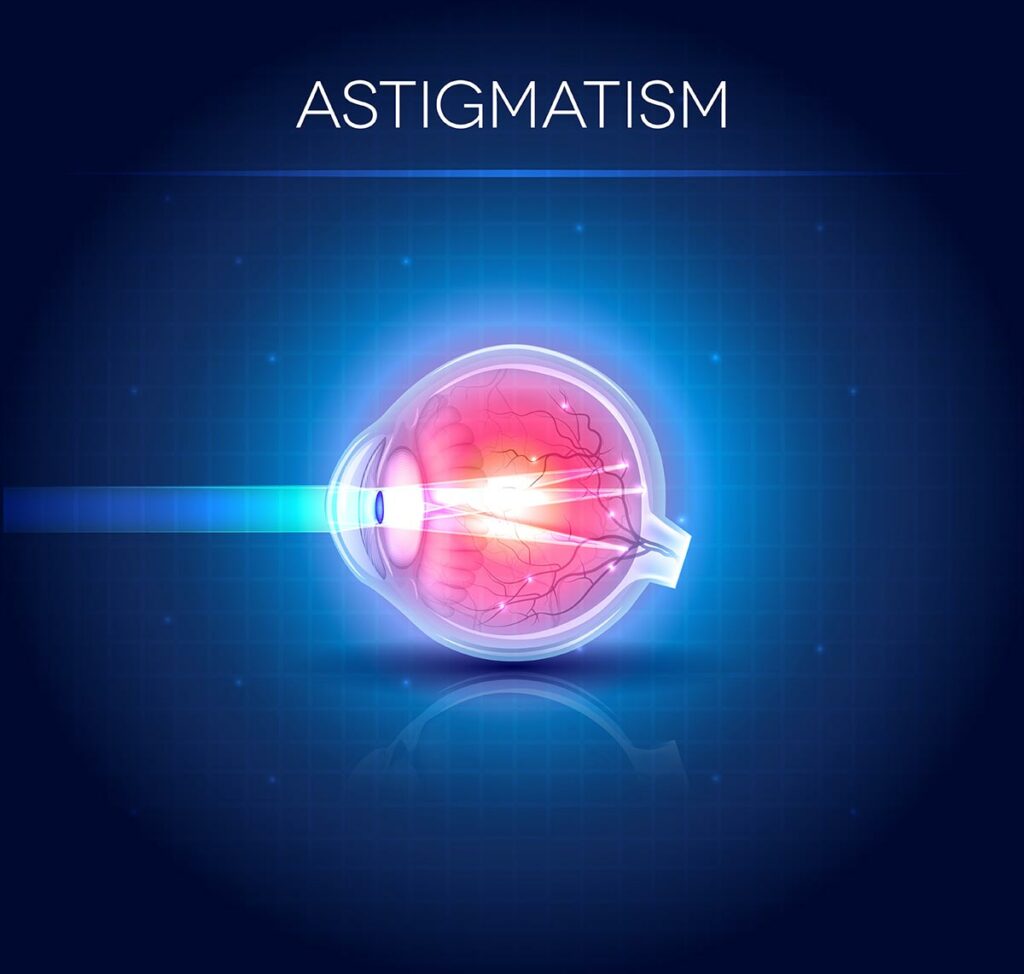LASIK FAQ’s
The excimer laser is a unique and incredibly precise high tech “cold laser” that was developed in the 1980s. It is now used during LASIK to gently reshape the surface of the cornea in order to correct nearsightedness, farsightedness, and astigmatism.
The laser passed arduous clinical trials in the late 1980s and 1990s before gaining final approval in this country in 1995. Today’s LASIK procedures are done with this instrument and since the laser is fully computer-controlled it provides a greater degree of accuracy than surgeons have ever had in the past.
This translates to an unprecedented level of success for our patients who undergo LASIK surgery. We currently use the VISX Star/S4 excimer laser.

Farsightedness or hyperopia is the opposite of myopia. The eyeball is either too short or the focusing power of the lens or the cornea is too weak not allowing light to focus sharply enough. As a consequence, the retina receives a blurred image. In the normal situation, the cornea is spherical or round, similar to a basketball. Farsightedness can be corrected with glasses, contact lenses, or refractive surgery, such as LASIK surgery.

Nearsightedness is also known as myopia and describes the condition where the eye focuses light too sharply either due to the length of the eyeball or the focusing power of the cornea or lens. As a consequence, the retina received a blurred image. Nearsightedness can be corrected with glasses, contact lenses, or refractive surgery, such as LASIK surgery.

Astigmatism is the term to describe how oval the cornea is. This “football shape” causes light to be streaked into a smeared or double image. Astigmatism can be corrected with glasses, contact lenses or refractive surgery, such as LASIK surgery.
- LASIK Albuquerque
- LASIK Glossary of Terms
- LASIK Consultation
- LASIK iDesign Technology
- Request a LASIK Consultation
- Cost and Financing
- Patient Stories
- Am I a LASIK Surgery Candidate?
- LASIK FAQ's
- LASIK Self-Test
- Preparing for Your LASIK Procedure
- LASIK Procedure: What to Expect
- Life After LASIK: What to Expect
- EVO ICL
